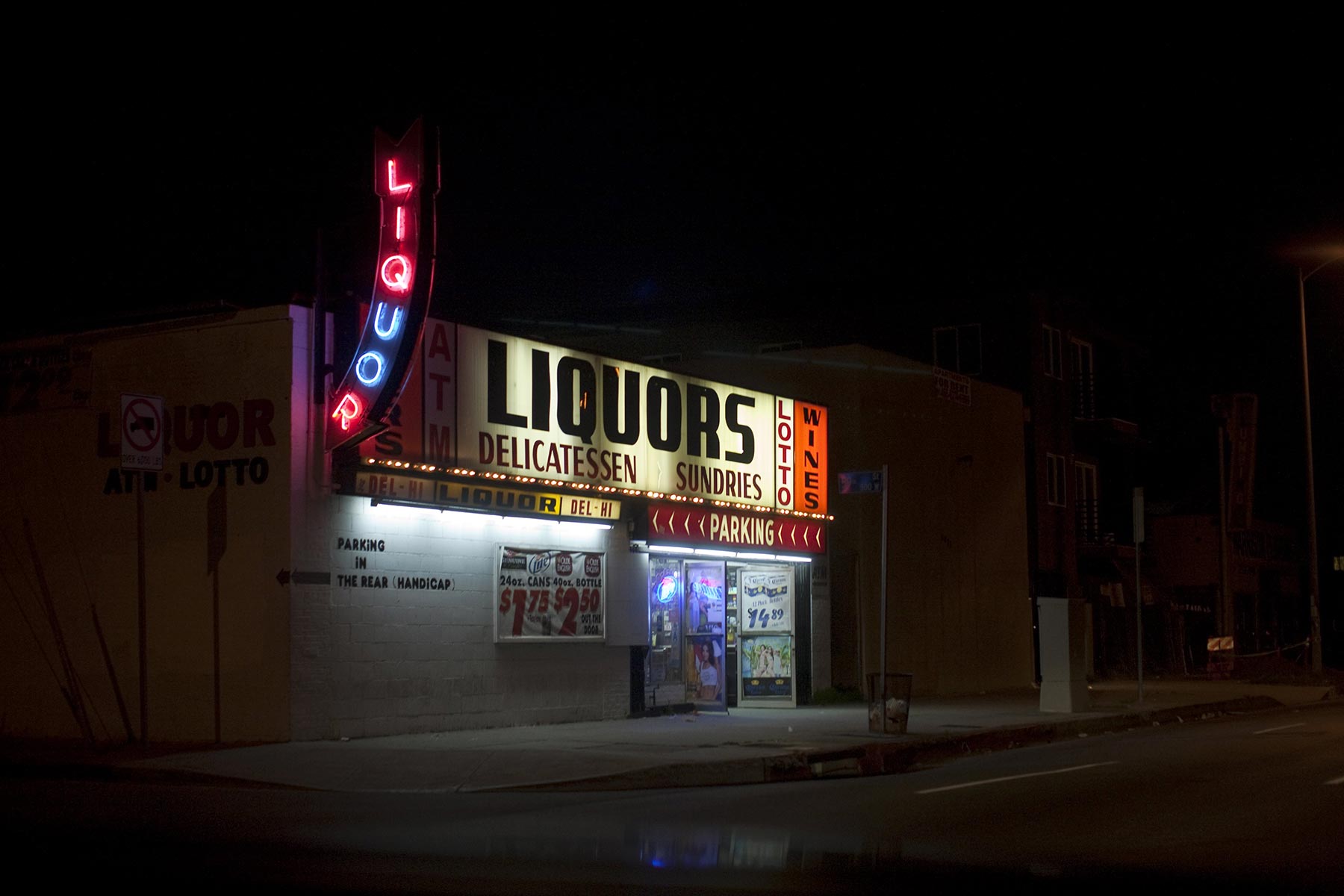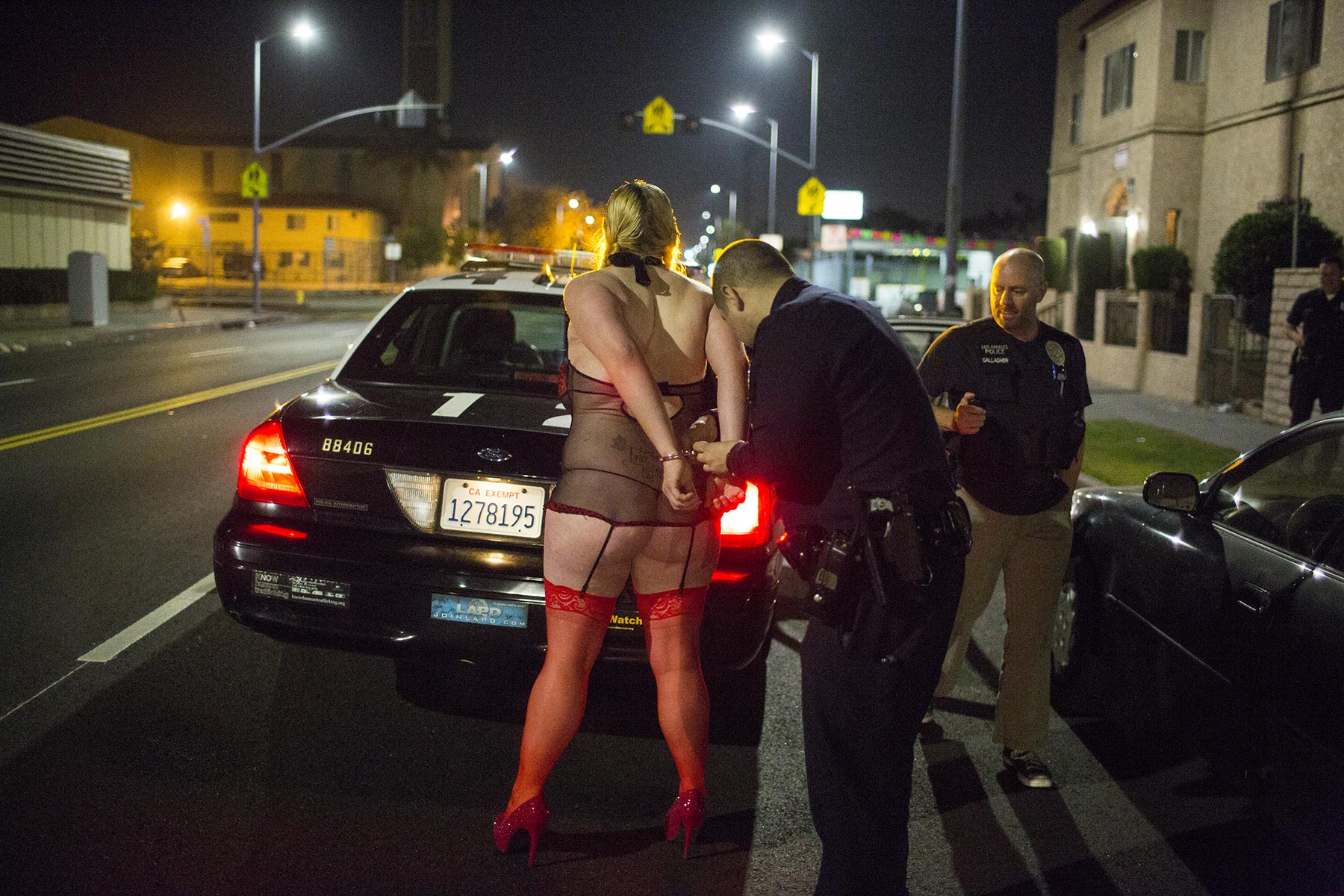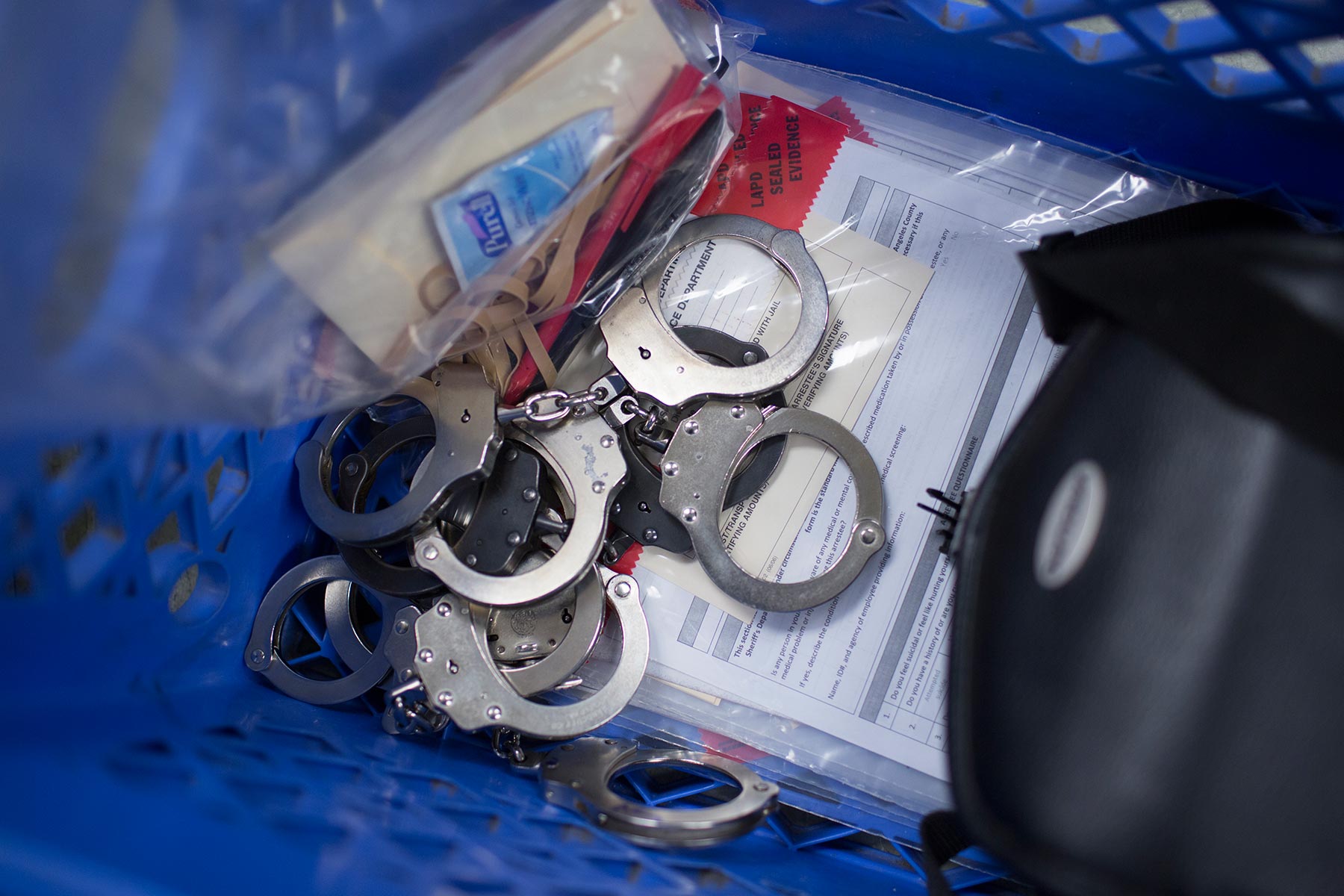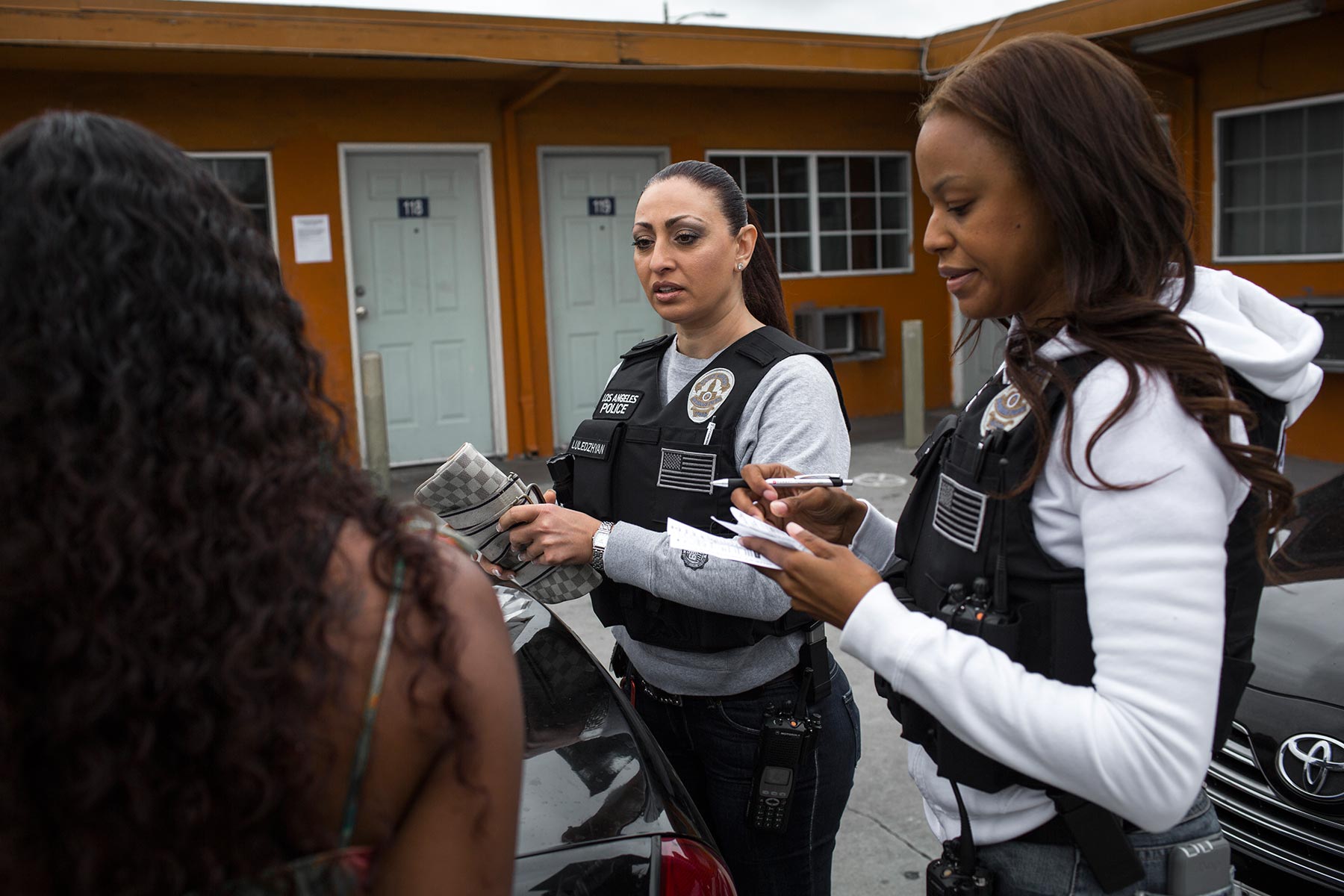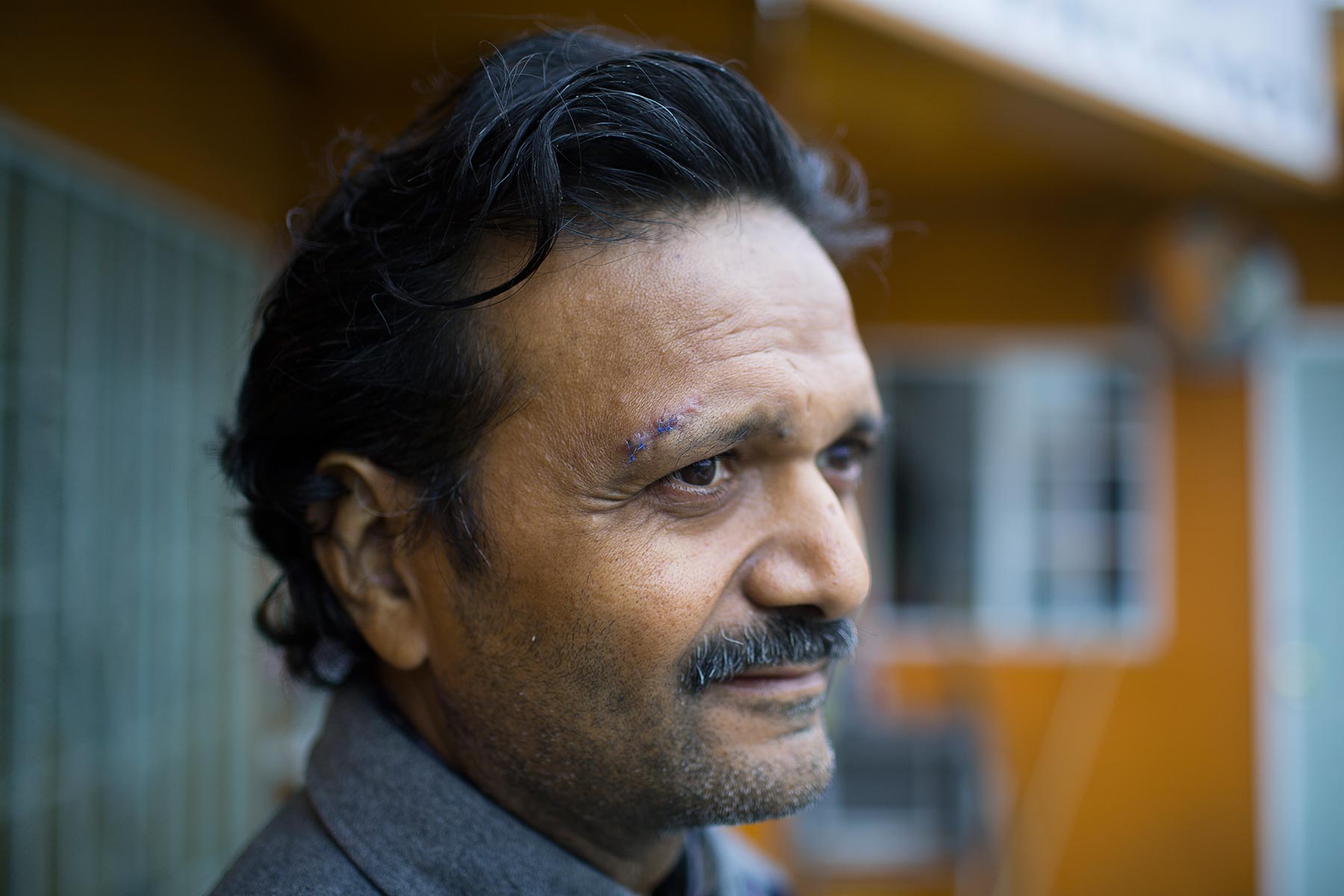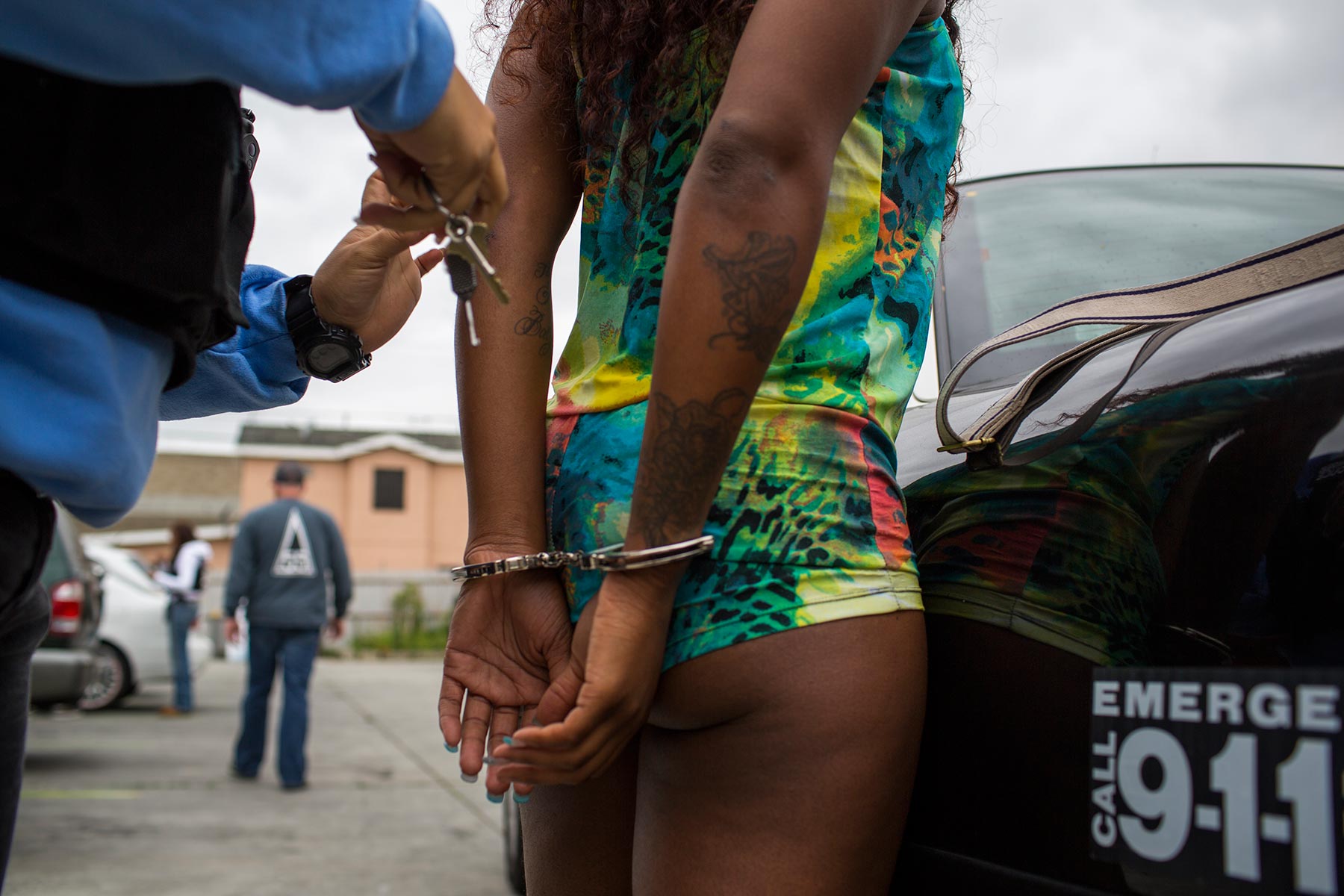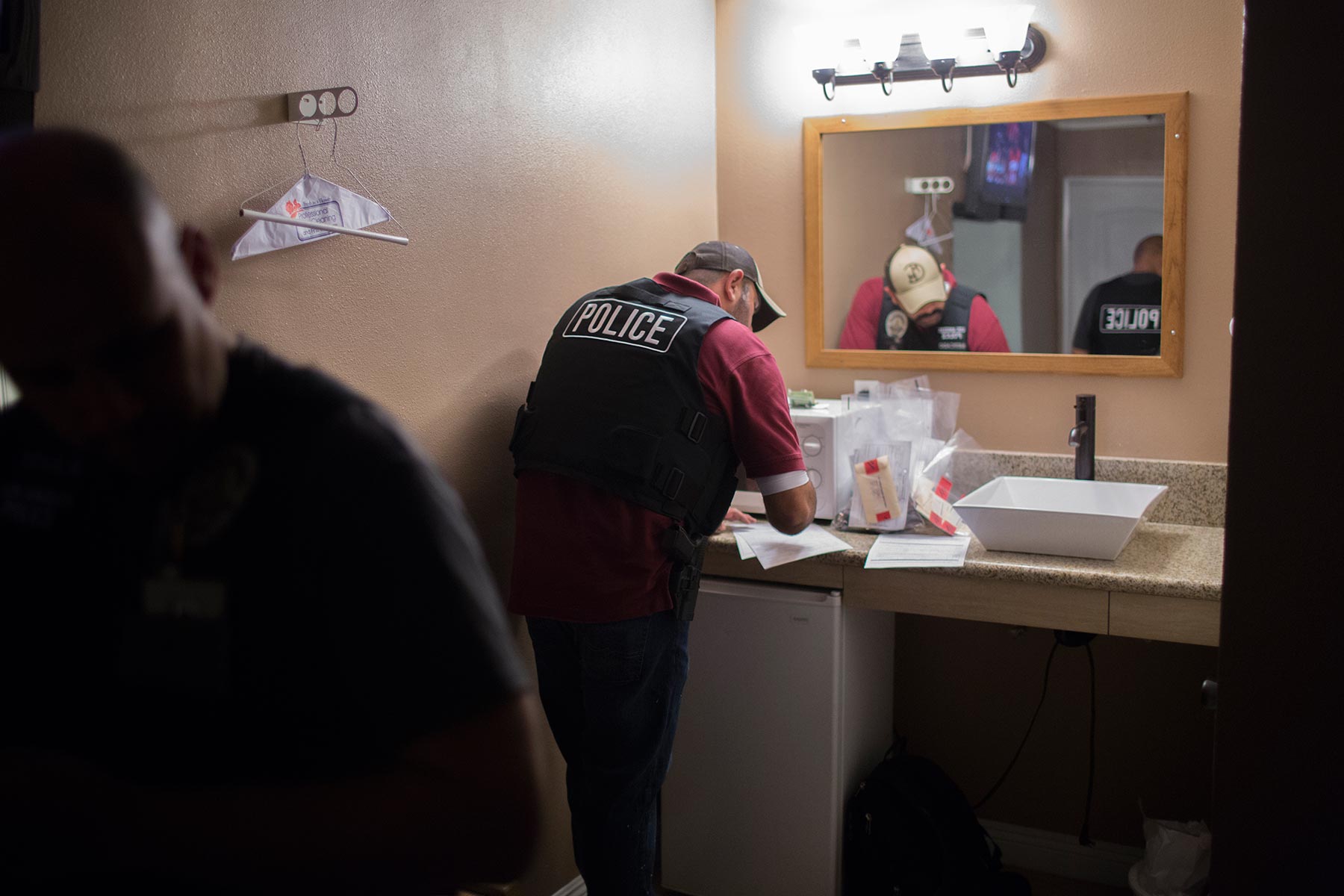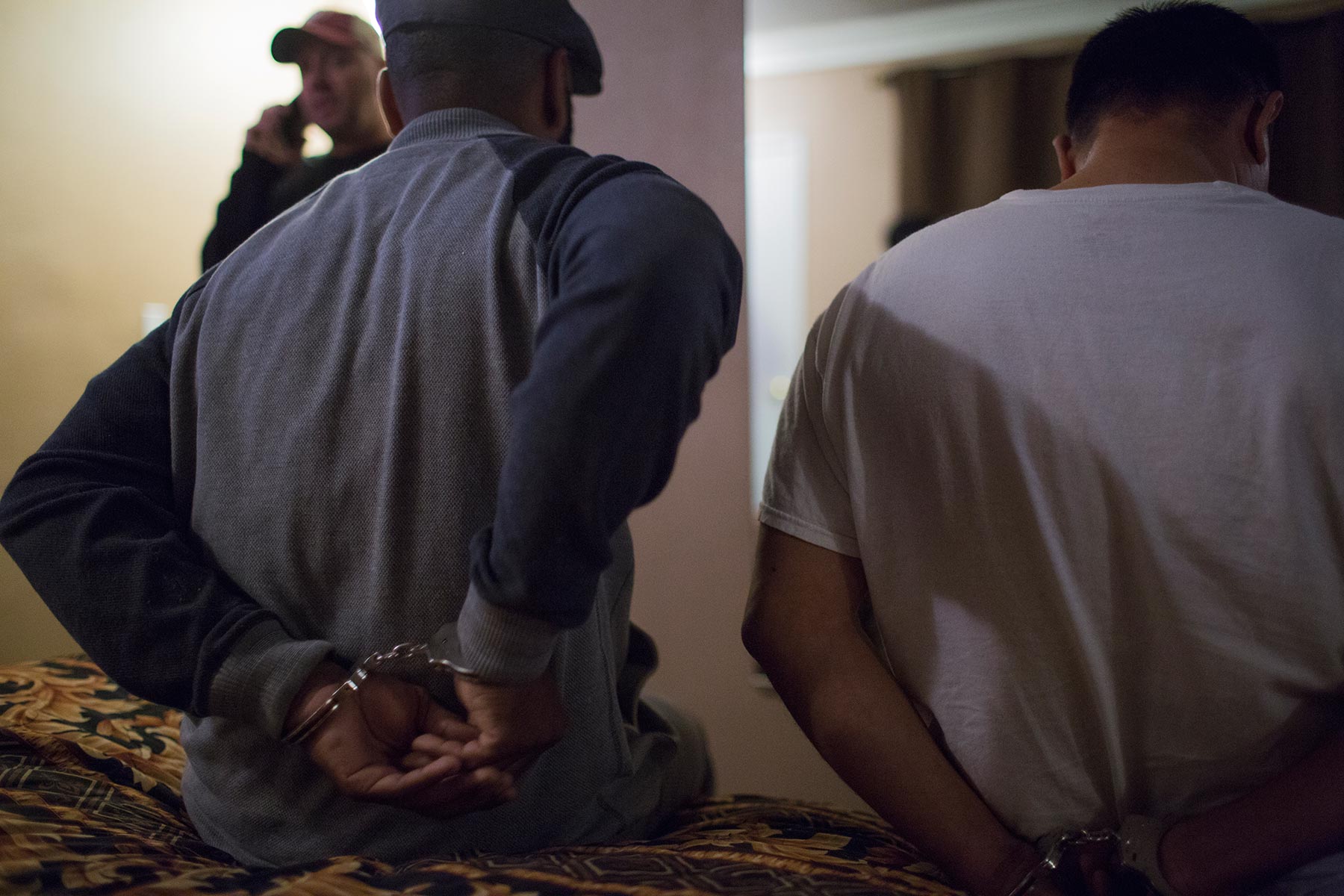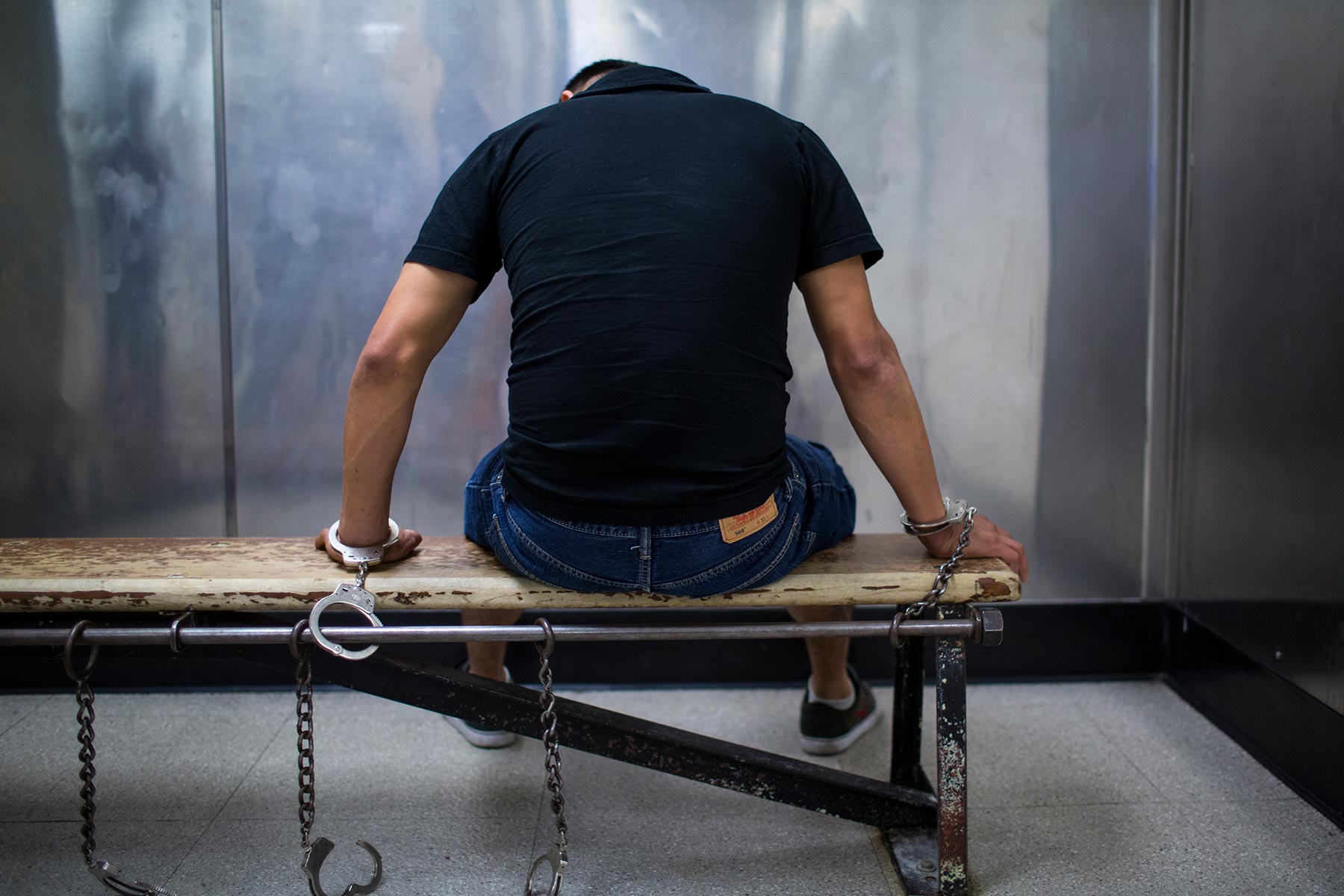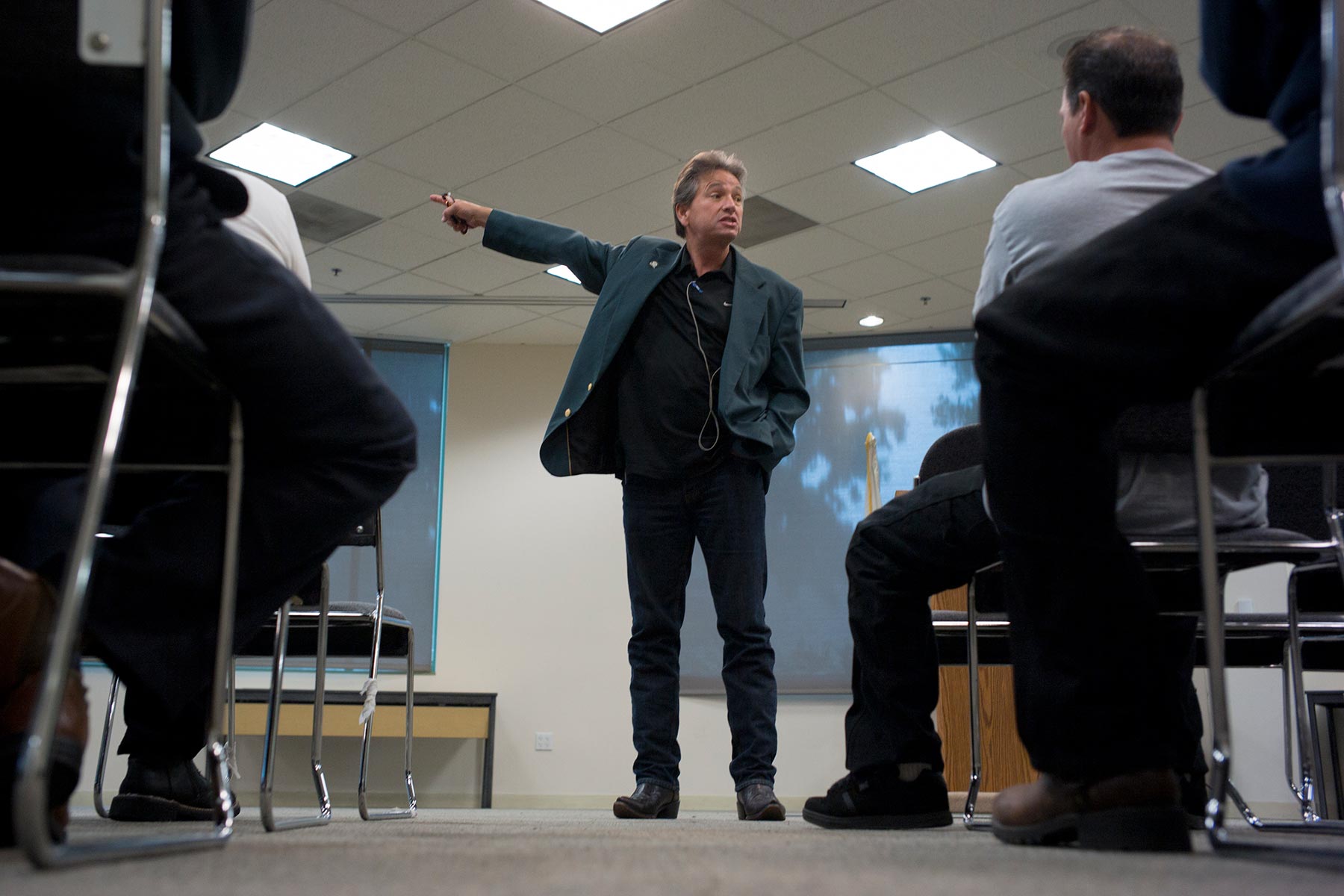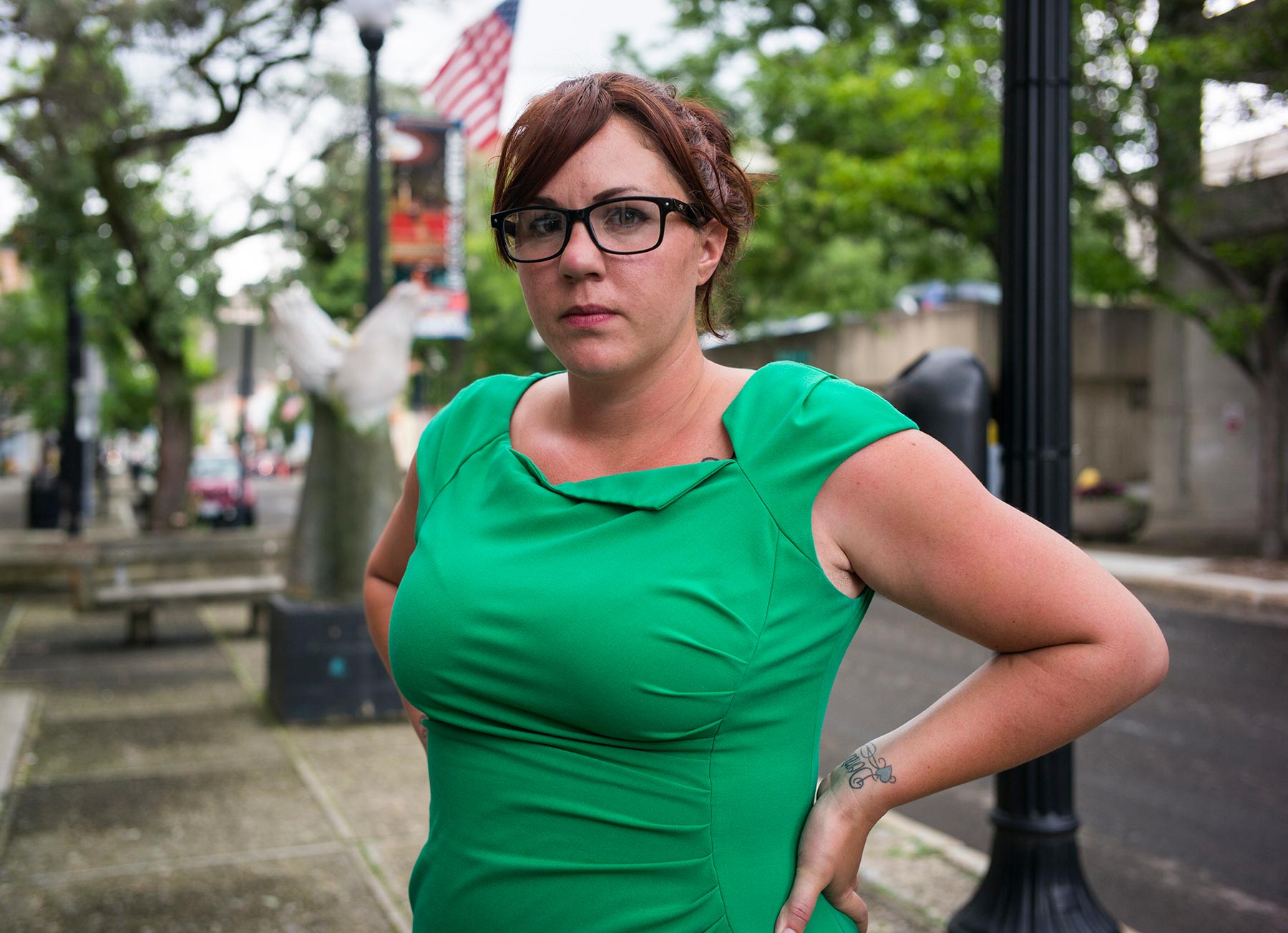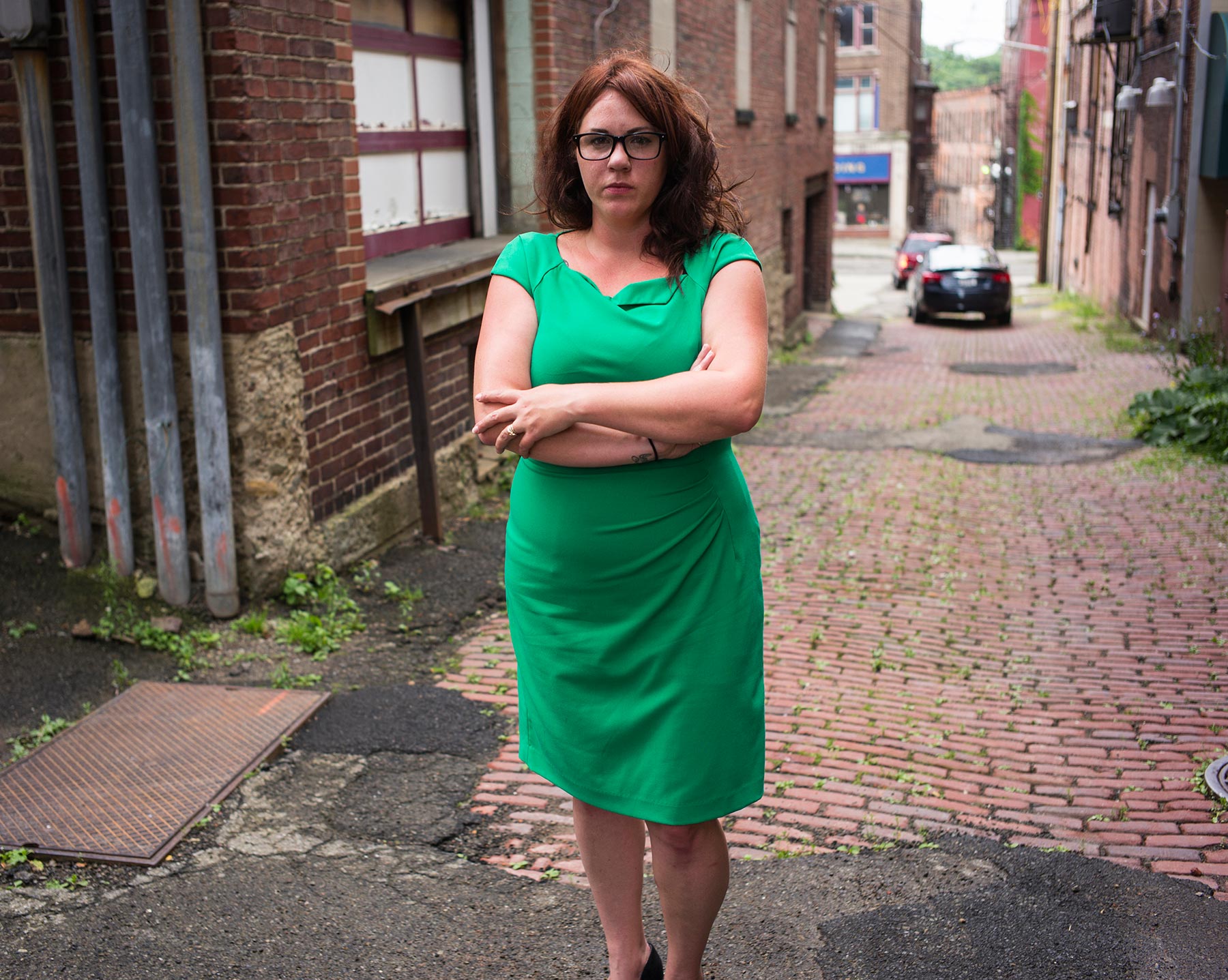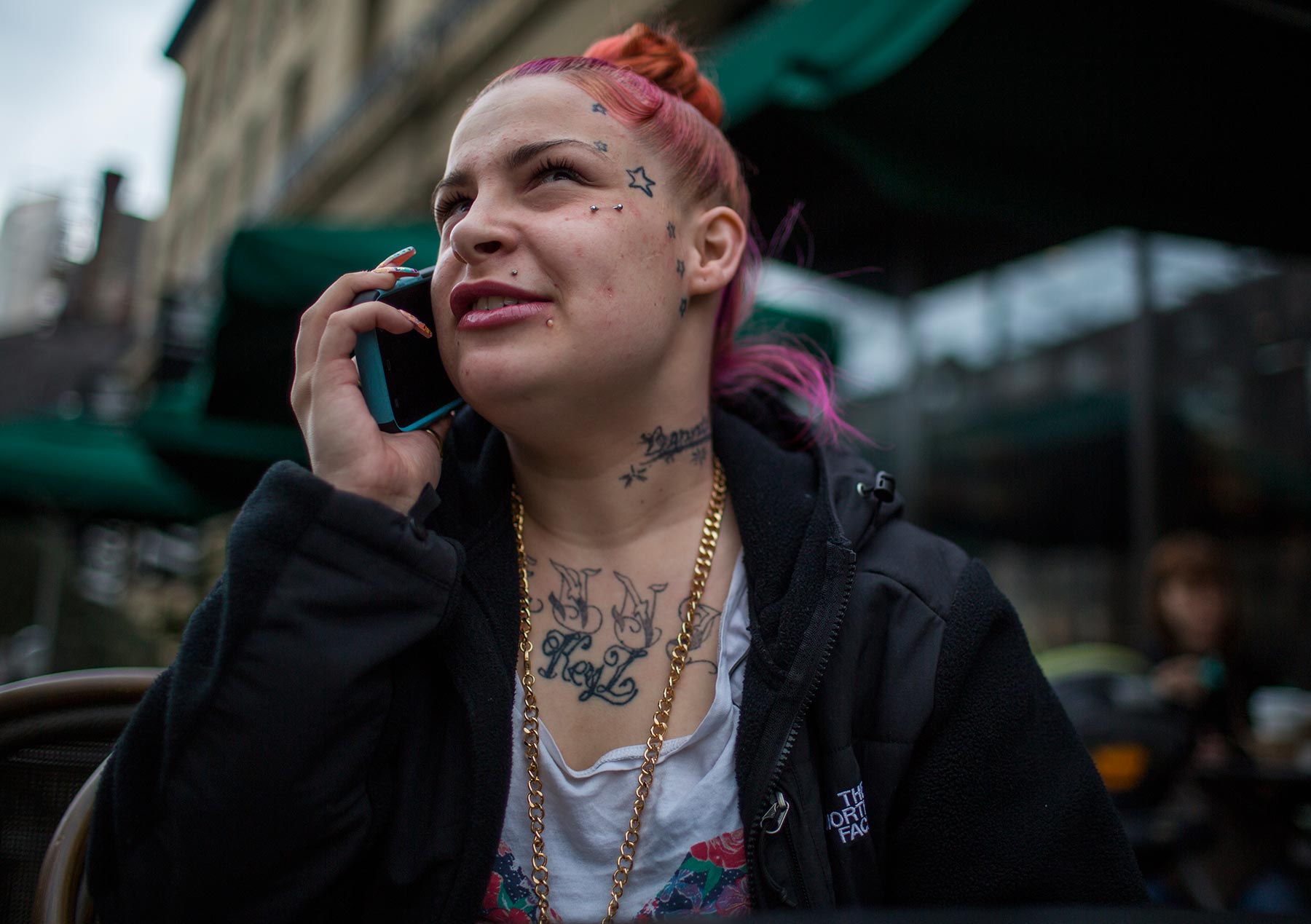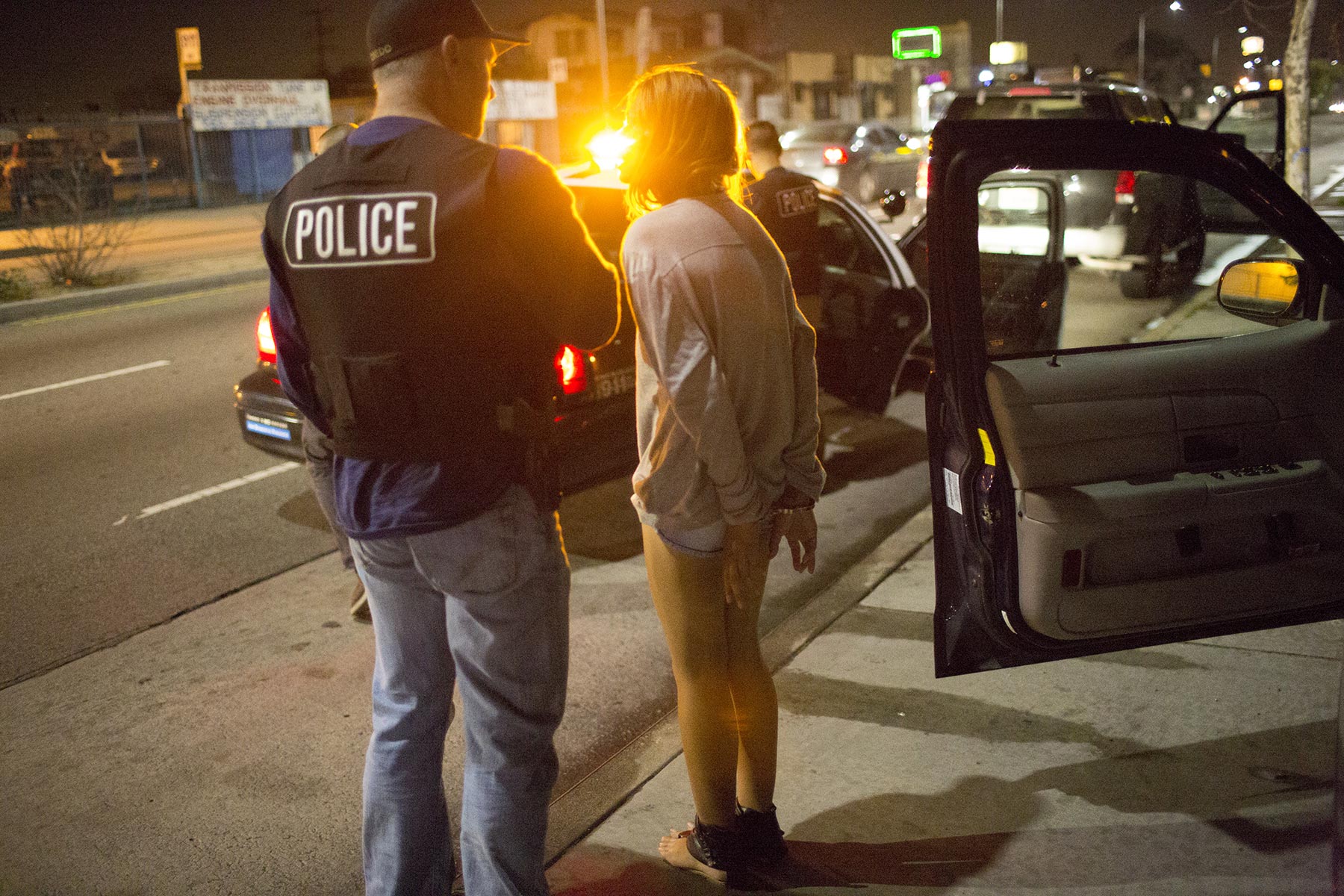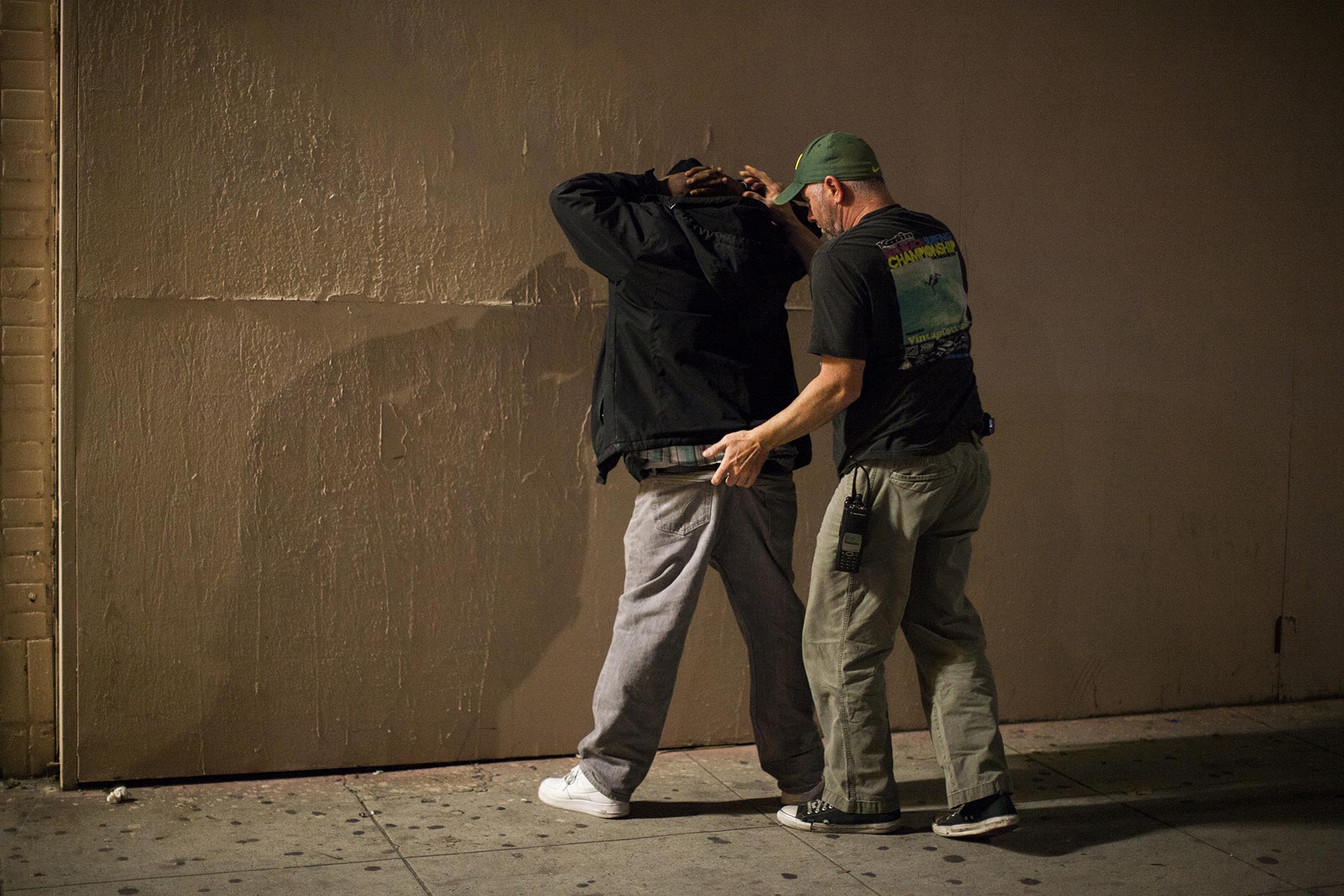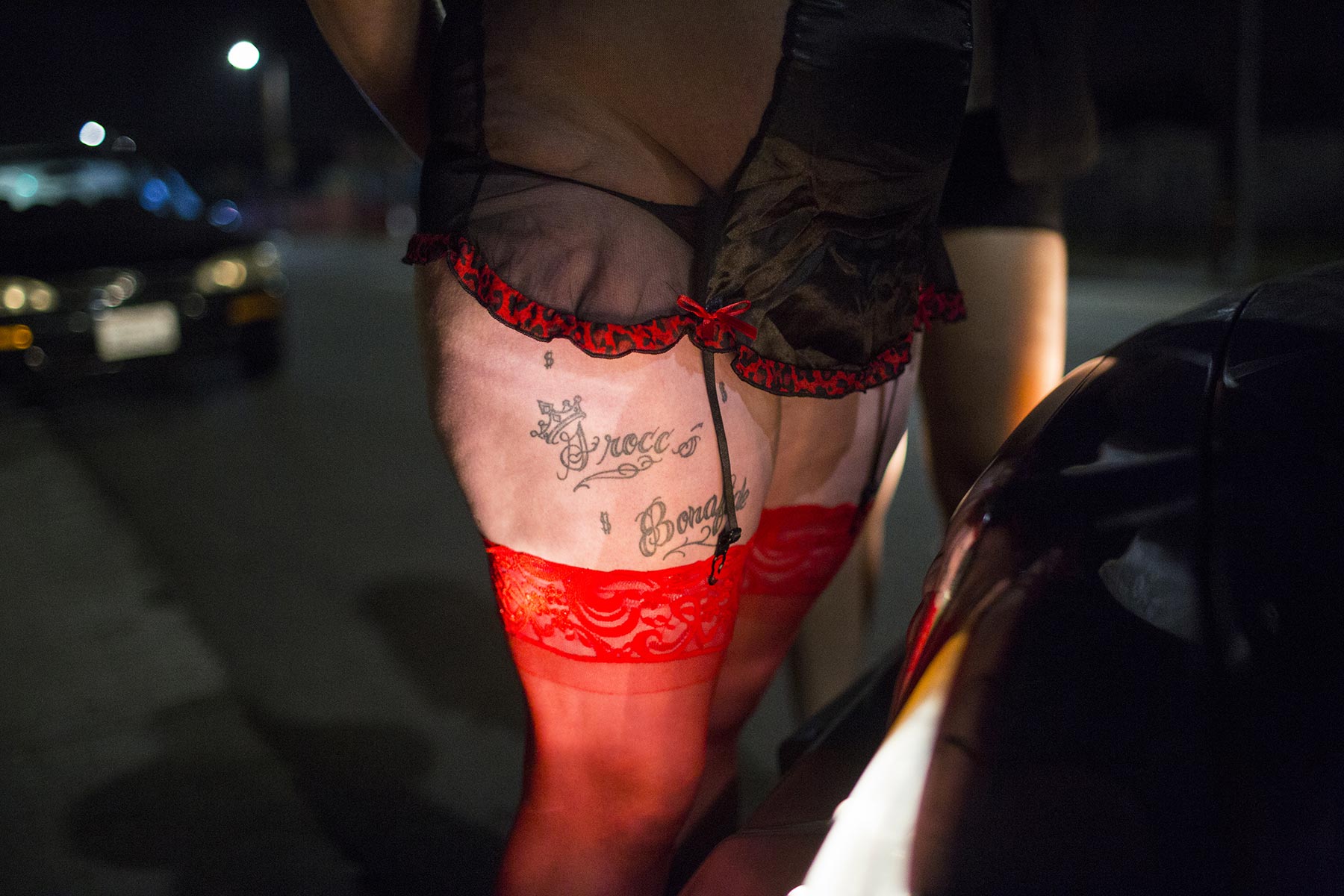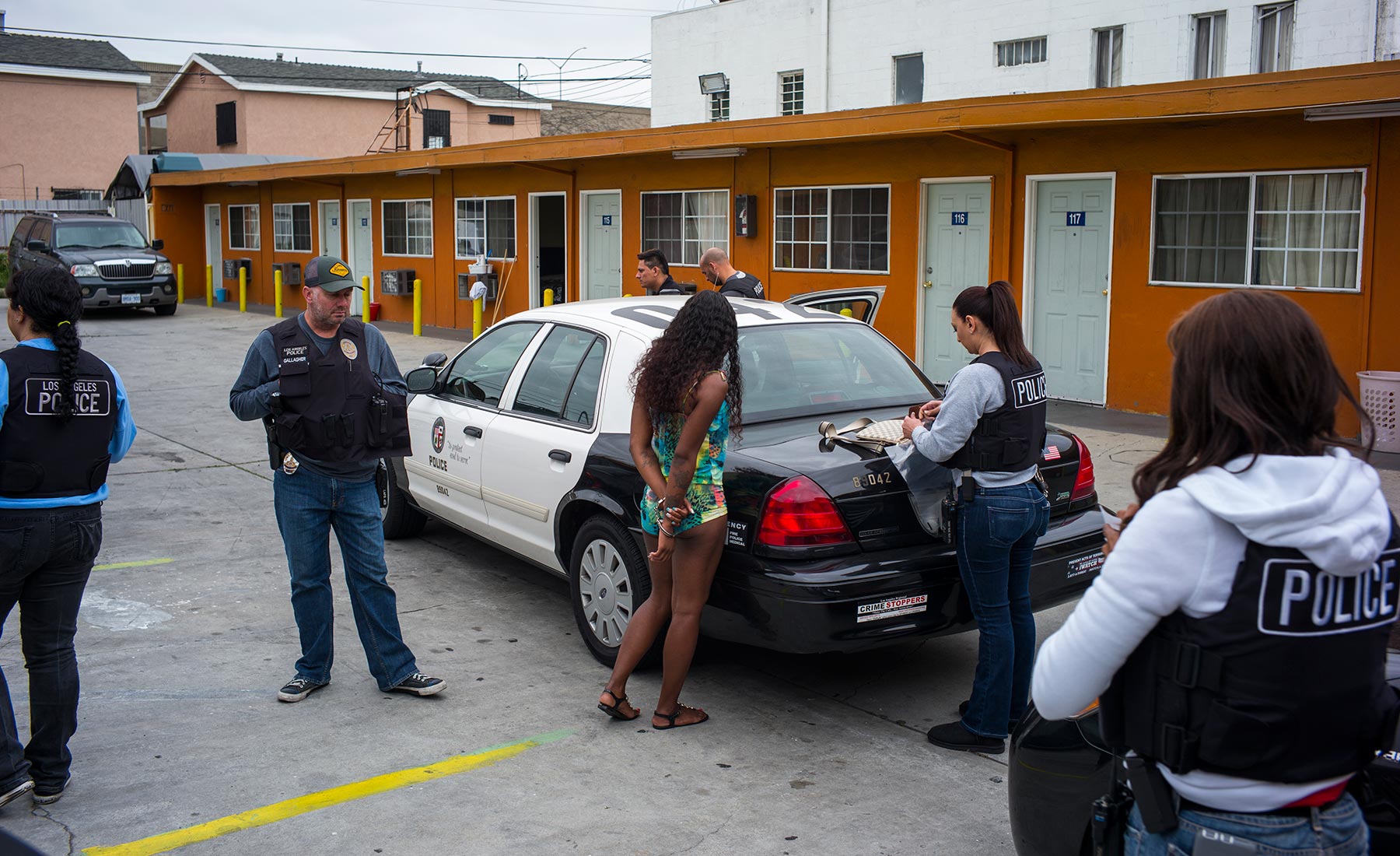
Selling American girls
Until recently, the victims were the ones being arrested
Series
This is a seven-part story examining sex trafficking in the United States.
On a cool, quiet Thursday night, crimes of all types unfurl on South Figueroa Street.
This is one of the main tracks for prostitution in Los Angeles, a strip where sex can be purchased from teenage girls on almost any given corner, where pimps, some of them gang affiliated, carefully guard their turf and property.
At about 200 blocks, most of them rough, the Fig, as it’s called, can hide a lot. In April it was hiding a 16-year-old named Stacey, missing since December.
She contacted a cousin on Facebook earlier that month, using someone else’s phone. She was with a pimp, she said. Then a big break: She called her mother from a blocked number, saying she didn’t know where she was and that she was scared.
After a frenzy of warrants for cellphone records from dozens of carriers, police narrowed the search to a Sprint number. But the ping from a cell tower isn’t pinpoint; the call was made within several hundred feet of a block on Fig, leaving Sgt. Brian Gallagher and his team to drive around and around, looking for Stacey on streetcorners, parking lots, motels and alleyways.
If he knew the identity of Stacey’s pimp, Gallagher, who runs the South Bureau Los Angeles Human Trafficking Task Force, would have an easier time of finding her. Pimps there operate much like narcotics gangs, each with his own turf or stretch of blocks where his girls work. If you know a pimp, you know where he places his girls. And if Gallagher found Stacey, he might be able to find her pimp, since the men tend to brand the girls with their monikers — their pimp names, often under a crown. Sometimes the tattoos are crude; other times, they’re in an almost girlish twirly script, like an ad for a cupcake shop or a princess costume.
But he doesn’t know who manipulated Stacey into jumping in and out of vehicles with men doing car tricks. He doesn’t know the name of the man she calls Daddy in her text messages to another girl, fretting that she needs to give him her money before she can eat or repay money she borrowed so she could eat.
“This little girl is driving me crazy,” says Gallagher, squinting into the dark as he drives through South Los Angeles, an area he sums up in four words: “Churches and liquor stores.”
He and Officer Andrew Gonzalez drive up and down Fig for hours, day or night, whenever they can find the time, going back and forth on the radio, block to block, looking for Stacey, whose face sometimes seems to appear on other girls and then, mirage-like, disappear.
Stacey might not be the face of human trafficking for most, but she is a typical victim of domestic human trafficking in the United States: an American girl with more troubles than advantages, targeted by a predatory pimp and trafficked in her own town, in her own neighborhood, even.
The johns
‘I drive a Hummer – that attracts the girls.’
LOS ANGELES — The men looked sleepy. It was 9 a.m. on a Saturday, and they sat, about 20 of them, in rows of stackable metal chairs, facing the front of the room. Dressed casually, in jeans and cargo pants, they looked as if they could be there for a real estate sales seminar or a tax workshop.
Except that they there to be taught about the perils of buying sex on the streets of Los Angeles.
Welcome to john school, where those busted for the first time get the opportunity to avoid jail.
Al Jazeera observed a session of a Los Angeles john school run by retired law enforcement officials. This one kept the day ticking with a number of presentations, including ones by a former cop, an attorney, a former sex worker and a sexually transmitted disease expert.
The girls
‘I might sit here on the outside and think that I look all good, but on the inside, I feel like shit.’
The two female cops following Liz Kimbel did not have kind words for her, at the time a 15-year-old girl walking D.C.’s streets.
“‘Bitch,’ ‘whore,’ ‘you little slut,’” said Kimbel, now 26, with a sigh, describing the first time she was arrested. “That was the worst experience I ever had with law enforcement.”
She spent the night in a police wagon, handcuffed to a 5-year-old girl who was out past curfew and did not know her address.
“I was so angry about that little girl,” said Kimbel. But she had problems of her own.
A Romeo pimp — one who promises romance before turning brutal — named Jazzy was running her on the streets of D.C. The first time she was arrested, she said, she was held for 12 hours and released on probation.
Somehow, the horrific details of her exploitation didn’t register with the system.
The advocates
‘We meet the girls where they are.’
Audrey Morrissey remembers the night in 1979 when she was turned out at the age of 16.
It was in Boston’s notorious Combat Zone — a hub of strip clubs, porn shops and sex trafficking — and her pimp was a boy she thought of as her boyfriend.
The first car she got into was an undercover cop car. He flashed Morrissey his badge. “If you give me a blowjob, I won’t arrest you,” he told her.
“I cried like a baby,” said Morrissey. “He said, ‘I’ll let you go this time, but you know you could be blowing some guy and he could slice your throat.’”

Scroll for more

The cops
‘They’re victims. Children can’t consent in this situation.’
She was 14 when she was arrested for prostitution in January 2015. The police report focused on her and not the grown men who tried to buy her or the trafficker who exploited her.
A news outlet in Eatonton, in central Georgia, reported that a “14-year-old girl caught having sexual intercourse is charged with prostitution,” citing an Eatonton police investigator.
Only after a local children’s advocate launched an online petition did the Putnam County district attorney drop prostitution charges against the child. Several men, mostly in their 30s and 40s, were also arrested.
The judge
‘We know that the problem exists, we see the children. We can’t cover up the sky and pretend that it doesn’t happen.’
Federal and state courts have to deal with a spaghetti tangle of laws when it comes to dealing with the sex traffic of minors. But the result can too often be the same: The pimps and johns get away, and the girls who are trafficked are left with marks on their record.
Hiram E. Puig-Lugo, a family court judge in Washington, D.C., is hoping to change that.
He recalled seeing a girl who had been in and out of his court for almost two years on the annual Youth Law Day in March, when teens are taught about the legal system at the courthouse.
A caseworker from the Department of Youth Rehabilitation Services went up to him and said, “There’s somebody who’d like to see you.”
The pimps
‘It’s easier in a lot of ways than selling drugs and guns, because it’s easy to lose a girl. You can just get another girl.’
In pop culture parlance, a pimp is a guy who makes things happen — a hustler who manages to succeed against the odds and lives large, with flashy cars, diamonds and pretty girls.
But that’s not what a pimp is. He’s not a flashy character in a rap song or the hero of an Oscar-nominated movie.
A pimp is a human trafficker.
And when those he exploits fail to meet his expectations, he will rape, beat, burn, choke or kill them.

